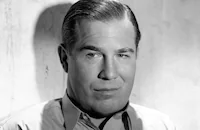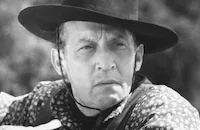George B. Seitz, the director of Times Square Lady, earlier helped Taylor along on his way to stardom by coaching him through Society Doctor (1935), which also co-starred Bruce. Taylor biographer Jane Ellen Wayne wrote that "Seitz was able to bring something out in Taylor," and that it was under his direction that the eager young actor learned to relax on camera. Taylor's relationship with co-star Bruce goes back even farther, to an early MGM screen test in which both appeared.
According to Wayne, Bruce also was Nebraska-born Taylor's first romantic interest in Hollywood - although their relationship was kept secret beyond joint appearances arranged by the studio to promote their films at premieres and other events. Some said that MGM disapproved of 24-year-old Taylor's involvement with a woman who had been married and divorced and had a young daughter. "To make matters worse," wrote Wayne, Bruce "had received kidnap threats regarding her daughter and she preferred to stay as close to the child as possible." For whatever reason, the romance soon cooled, and in 1936 Taylor met Barbara Stanwyck, whom he would marry in 1939. (The two were divorced in 1951, and Taylor married Ursula Thiess, who would remain his wife until his death at age 57.)
Taylor also was approaching a major turning point in his career; on loan-out from MGM to Universal, he scored a huge success playing opposite Irene Dunne in Magnificent Obsession (1935) and emerged a full-fledged star. Taylor would spend the bulk of his career at MGM, where he enjoyed the longest-running movie contract in history.
Producer: Lucien Hubbard
Director: George B. Seitz
Screenplay: Albert J. Cohen, Robert T. Shannon
Cinematography: Lester White
Editing: Hugh Wynn
Original Music: William Axt
Principal Cast: Robert Taylor (Steve Gordon), Virginia Bruce (Toni Bradley), Helen Twelvetrees (Margo Heath), Isabel Jewell (Babe Sweeney), Nat Pendleton (Mack), Pinky Tomlin (Pinky), Raymond Hatton (Slim Kennedy).
BW-69m.
by Roger Fristoe




























